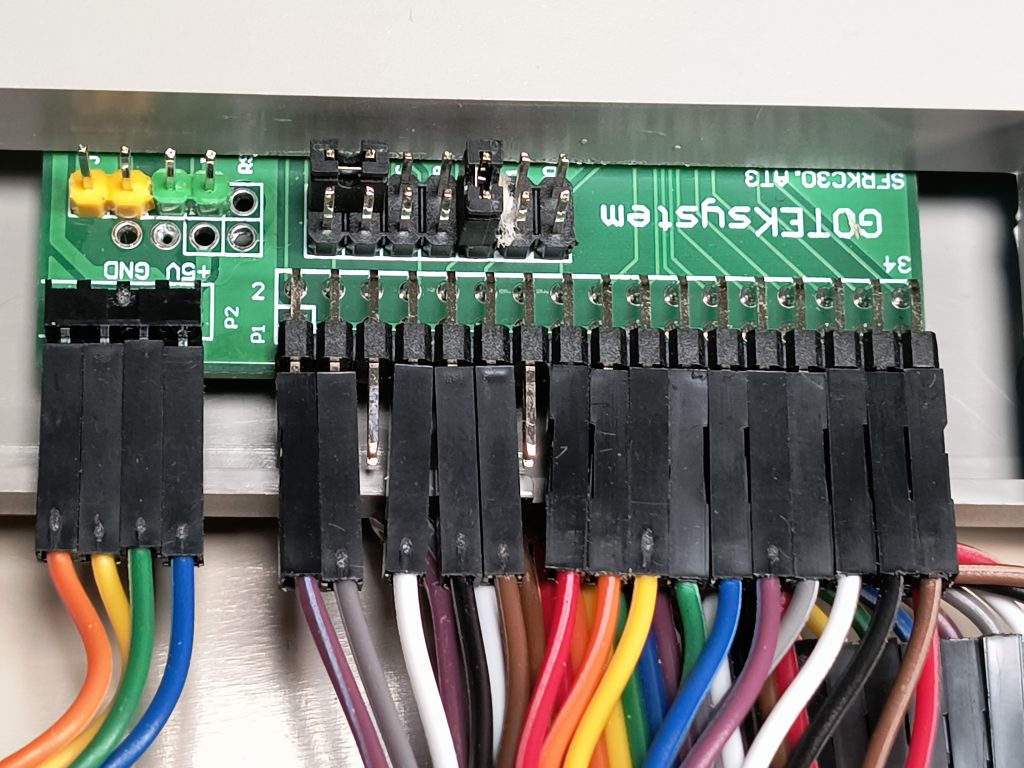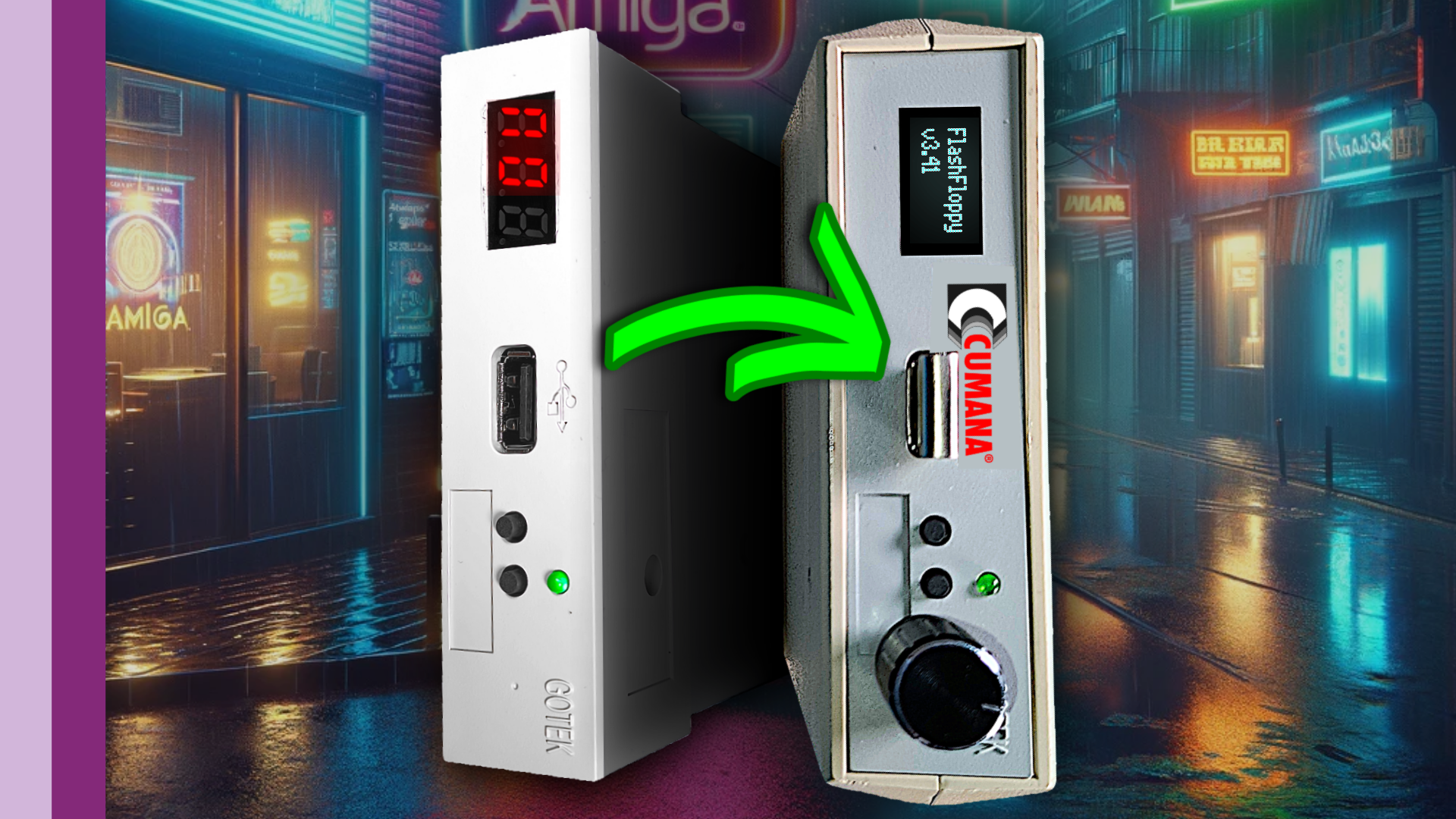In my latest quest to enhance my Amiga tech setup without succumbing to the often-inflated prices attached to Amiga-branded tech, I decided to embark on a project that not only tickles my nostalgic senses but also brings modern efficiency to my beloved Amiga setup. I’ve always had a particular disdain for the aesthetically displeasing, modern external floppy drive enclosures that seem to populate the market today. They often come with compromises, such as a lack of the vintage 23-pin D type connectors, essential for that authentic connection, or the absence of a pass-through feature on the back, which I find incredibly useful.
Determined to maintain the vintage aesthetic while upgrading the functionality, I turned to an original external floppy drive enclosure from the glory days of the ’80s and ’90s. The charm of these enclosures isn’t just their look; it’s the functionality they offer – the 23-pin D type connectors, the pass-through capability, and the drive enable/disable feature on the back, all of which are sorely missed in their modern counterparts.
For this project, I chose a CUMANA 3.5-inch floppy drive enclosure, a brand that resonated with my school days, being the provider of all floppy drives during my education. The aim was to convert this enclosure to house a GOTEK floppy emulator, a device that replaces the traditional floppy disk with a USB flash drive, thus bringing the convenience of modern storage to vintage hardware. The GOTEK itself is pretty standard, equipped with a seven-segment display and basic firmware, but perfect for what I had in mind.

The upgrades planned were significant but straightforward: replacing the seven-segment display with an OLED display for better visibility and aesthetics, and adding a rotary encoder for improved navigation and selection of the USB files. The OLED display choice was the compact 0.91-inch version, which fits perfectly without overwhelming the vintage enclosure. The rotary encoder, a simple but effective analog device, adds a tactile navigation method that feels right at home with the Amiga setup.
One of the interesting challenges was ensuring compatibility with the Amiga’s unique floppy disk format. Modern GOTEKs are designed with industrial applications in mind and don’t naturally support the Amiga disk format. However, with the Amiga community being as vibrant and inventive as ever, custom firmware solutions like FlashFloppy have emerged. This firmware enables the GOTEK to read and write Amiga disk formats, effectively mimicking an original Amiga floppy drive.
The actual conversion process involved some soldering and a bit of creative cable management but was overall a rewarding experience. It involved installing a jumper, soldering a right-angled six-pin Dupont header for the rotary encoder, and making minor modifications to the GOTEK’s case to accommodate the OLED display. The end result was a GOTEK emulator that not only fit perfectly within the vintage enclosure but also functioned seamlessly with it, providing a modern solution to a retro problem.
Testing the setup with an Amiga 500 and Kickstart 2.4, I experienced a seamless boot to the Amiga Test Kit, followed by successful loading of Workbench 3.2 from the install disk image. This confirmed the successful integration of modern storage technology into the vintage Amiga ecosystem, all housed within an enclosure that keeps the aesthetic of the era alive.
This project, sponsored by PCBWay, showcases the perfect blend of retro aesthetics and modern functionality. It’s a testament to the enduring legacy of the Amiga and the innovative spirit of its community. For anyone looking to replicate this setup or seeking assistance with similar projects, PCBWay offers comprehensive services from PCB prototyping to assembly, making them an invaluable resource for hobbyists and professionals alike.
In conclusion, this venture into blending old with new has been an immensely satisfying journey. It reinforces the idea that with a bit of creativity and community support, we can preserve the essence of vintage computing while enjoying the conveniences of modern technology.



One Reply to “Vintage Vibes: GOTEK Drive’s Nostalgic 80s Upgrade”
Comments are closed.